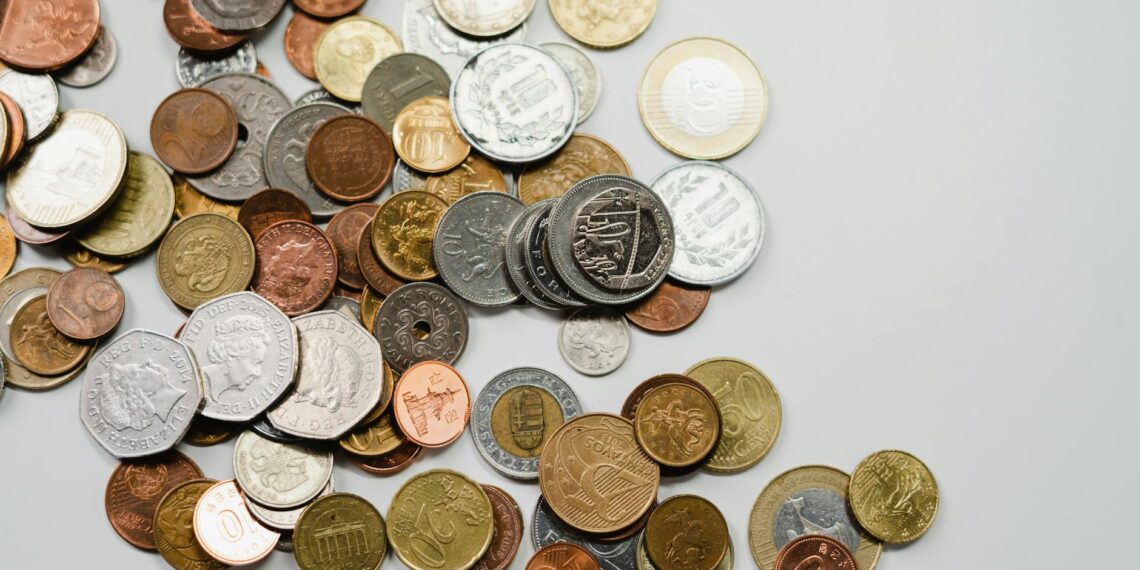Coin silver refers to silver alloys with a purity of 90% silver and 10% copper, traditionally used to make silver dollars and other silver currency.
Here’s how to identify coin silver:
- “Coin”, “Dollar”, “Standard”, or “Premium”: These stamps generally indicate 90% silver purity in the United States.
- 900: This number represents 90% silver purity and may be stamped on antique coin silver pieces.
- Solid silver stripe: A uniform white or silver edge suggests a high silver content (90%).
- Copper stripe: The presence of a copper stripe indicates a clad coin with a base metal core.
- Subdued silver stripe with faint copper traces: This may suggest a 40% silver composition, found in some US Kennedy half dollars minted between 1965 and 1970.
- Silver is not magnetic: If a magnet sticks to the coin, it is likely not silver or is only silver-plated.
- Silver is a great thermal conductor: Place an ice cube on the coin and observe how quickly it melts.
- Rapid melting: If the ice melts quickly, it could indicate the presence of silver due to its high thermal conductivity.
- Subtle heat transfer (with verification): Place the coin on a non-conductive surface. The silver should transfer its energy to the ice, causing a small amount to melt before reaching equilibrium and freezing to the ice.
- Pressure-induced melting: Applying pressure to the coin with your fingertips should cause the ice to melt quickly due to heat transfer from your hand through the silver to the ice.
- Silver has a specific gravity of approximately 10.5.
- Testing procedure: Weigh the item in air, then submerge it in water and record its weight while suspended.
- Calculation: Divide the weight in air by the submerged weight to obtain the specific gravity.
- Interpretation: A specific gravity close to 10.5 suggests a high purity level of silver.
- Acid testing involves placing a drop of nitric acid on a silver item.
- Expected reaction: Pure silver (90-100%) will cause the acid to turn a creamy color.
- Different reactions: Lower silver content (65-75%) may result in a light green color, while fake silver may not cause any color change.
- Caution: Acid testing can damage the item. It is recommended to use a testing stone instead of applying the acid directly to the coin.
- Detailed and clear mint marks and designs: Authenticate the coin by comparing its details with official mint records.
- Smoothness and consistent color: Genuine silver coins tend to have a uniform appearance.
- For the most accurate and definitive assessment, consult a professional coin dealer or appraiser.
- X-Ray Fluorescence (XRF) testing: Professionals may use XRF testing, a non-destructive method to determine the precise silver content.
Note: Always exercise caution when handling testing chemicals or potentially valuable coins. Consider using multiple tests for greater accuracy and verification of authenticity.









How do you test silver coins at home?
Silver tarnishes quickly, turning black, when in contact with bleach. A small spot of bleach can therefore be used to identify silver. The tarnish can easily be polished away, and silver items should leave the cloth slightly blackened by the tarnish being removed.
Will silver coins stick to a magnet?
Silver is not magnetic, not even with the strongest magnet. However, silver is diamagnetic. If you hold a silver coin at 45 degrees a suitable magnet will slide down it slowly.
How to identify original silver at home?
Thanks for asking. To check if something is real silver, use a magnet. Silver is non-magnetic, so if the magnet sticks strongly, it’s not silver. Look for hallmarks like ‘925’ and conduct additional tests for a comprehensive evaluation.